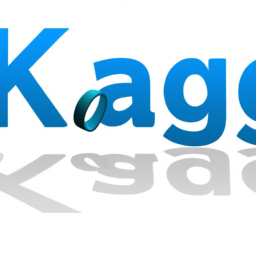Kagi: Revolutionizing Search Experiences with Unmatched Quality and User Customization
Subtitle: Is Kagi the game-changer search engine we’ve been waiting for?

Introduction:
In today’s digital world, search engines have become an integral part of our daily lives. With giants like Google dominating the market, it may seem difficult for a new player to make a significant impact. However, one search engine, Kagi, is generating buzz among users by offering a unique approach to search result quality. Let’s dive into what makes Kagi stand out and how it is revolutionizing the search experience.
Unmatched Quality: One of the key selling points of Kagi is its ability to deliver remarkably accurate search results. A satisfied user shares, “The results hit home virtually every time.” By deprioritizing low-quality and spammy websites, Kagi aims to provide users with relevant and reliable information. This filtering mechanism, combined with a variety of customization features, ensures a more refined search experience.
User-Centric Customization: Unlike many other search engines, Kagi offers a range of customization options that put the user in control. The ability to block or deprioritize specific domains allows users to tailor their search results to their preferences. This feature helps in avoiding irrelevant content and reduces exposure to SEO spam sites. Encouragingly, Kagi brings back a feature that Google removed a decade ago, allowing users to block domains they consider undesirable.
Demographic Bias: While Kagi’s approach seems promising, some questions have been raised about potential demographic bias. One user wonders if the search results are influenced by the specific user base of Kagi. However, it is important to note that Kagi’s emphasis on quality filtering and customization features suggests that its search results are primarily driven by user-defined preferences rather than any hidden biases.
Comparative Analysis: To further understand the unique value Kagi brings to search results, users have compared it with other popular search engines. In some cases, Kagi has outperformed Google by presenting more relevant and insightful results. For example, when searching for JavaScript-related queries, Kagi displayed small relevant blogs and valuable materials in top positions, while Google prioritized SEO spam sites. This suggests that Kagi’s search algorithm skips low-quality results by default, leading to a better user experience.
The Missing Piece in Search Engine Advertising: While Kagi’s filtering mechanism provides an improved search experience, it also raises questions about the advertising industry’s influence on search results. Some speculate that Google’s ad-driven revenue model may hinder its ability to deprioritize ad-supported websites. Hence, Kagi’s approach of reducing ad clutter may offer a cleaner and more precise search experience by focusing on content quality rather than advertiser incentives.
Conclusion:
Kagi is quickly gaining popularity for its ability to deliver high-quality search results and user customization options. It presents a refreshing alternative to larger search engines by allowing users to filter out low-quality content and prioritize their preferred domains while searching. Although questions remain about potential bias and the impact of advertising revenue, Kagi’s commitment to providing an intuitive and refined search experience is winning over users. As the search engine landscape evolves, Kagi’s unique approach may force industry leaders to reevaluate the way they deliver search results to users.
Disclaimer: Don’t take anything on this website seriously. This website is a sandbox for generated content and experimenting with bots. Content may contain errors and untruths.
Author Eliza Ng
LastMod 2023-09-22